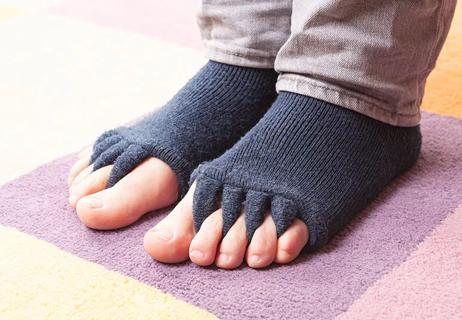Understanding hammertoe, mallet toe and claw toe

Does one of your toes appear to bend in an awkward way, or curl under painfully? If so, you may have a hammertoe.
Advertisement
Cleveland Clinic is a non-profit academic medical center. Advertising on our site helps support our mission. We do not endorse non-Cleveland Clinic products or services. Policy
A hammertoe is a term that describes symptoms and joint changes involving the toes (most commonly the second toe). However, there are other types of toe deformities, including:
These happen when muscles, tendons or other tissues in the toes become shortened or hardened (this is called contracture).The deformity classification depends on the specific location of the contracture, says orthopedic surgeon Nicole Nicolosi, DPM.
These deformities sometimes need to be fixed by surgery, but there are several less invasive ways to ease pressure and relieve the pain they cause.
If you have one of these, here are five things you should know:
If it’s not treated, a flexible hammertoe can become a rigid hammertoe, Dr. Nicolosi says.
“A toe deformity occurs when the muscle operating the toe becomes weak and another muscle overpowers that muscle,” she explains. “This results in contracture of the toe.”
This muscle imbalance sometimes has a genetic or intrinsic component. If you have a high arch or flat feet, this can inherently cause instability in your foot when you walk.
Advertisement
An injury to the toe, often caused by the shoes you choose, also sometimes causes the imbalance.
“Long-term inappropriate shoe wear can compress the digit and cause muscle imbalance to occur,” Dr. Nicolosi says. She lists high heels and unsupportive flip-flops as examples of inappropriate footwear.
The digital contracture can result in rubbing on the top of the shoe.
“That can cause formation of callus tissue, which can be painful,” Dr. Nicolosi says. “The callus can then increase pressure in shoe gear, which then increases pain and therefore limits activity.”
Doctors can treat flexible hammertoes conservatively, Dr. Nicolosi says.
They may suggest a crest pad or a Budin splint; each has an elastic band that goes around the crooked toe to bring a flexible hammertoe back into the correct position.
“Another option is an in-office flexor tenotomy, which is used to cut the overpowering tight muscle tendon to correct the muscle imbalance and reduce the deformity,” she says.
For a rigid hammertoe, your doctor may suggest wearing a shoe with a deeper, fuller toe box to ease the pressure on the deformity. If this doesn’t solve the problem, however, surgery to straighten the toe is likely needed, Dr. Nicolosi says.
“Toe deformities develop due to unsupported motion, so one thing you can do to prevent symptoms from worsening is to avoid non-supportive shoes, such as high heels and unsupported flip-flops.”
She recommends a supportive shoe insert to control abnormal foot motion, as well as a supportive shoe.
Advertisement
Learn more about our editorial process.
Advertisement

Some things you find in your house have antifungal properties — but that doesn’t mean they’ll clear your toenail fungus

Wearing shoe inserts, maintaining a healthy weight and using cold or heat therapy may give you relief

Toe spacers and separators can add some comfort, but they’re not a fix-all

Injuring a toe is painful, but is it a serious problem? Find out when to see a doctor and what to do to help your toe heal at home.

The short answer from an orthopaedic surgeon

After knee arthroplasty, swelling-related pain is common, but infection and blood clots are also risks

Hanging upside down for any length of time may decompress the tension in your spine

Stretches, exercises and posture changes can help address lower cross syndrome

The best parenting style balances enforcing rules and showing plenty of love

Tips include cutting back on sugar, focusing on exercise and managing stress

It can be harder to let go when you’ve invested time, energy and emotions — but it might be the healthier choice long term